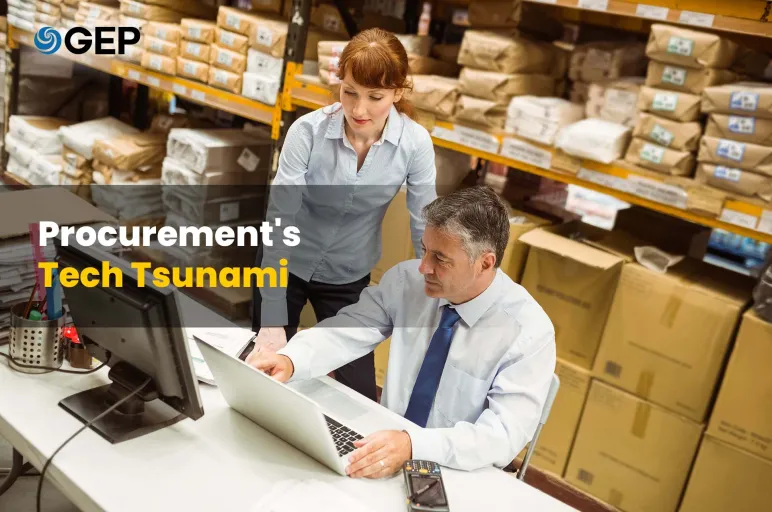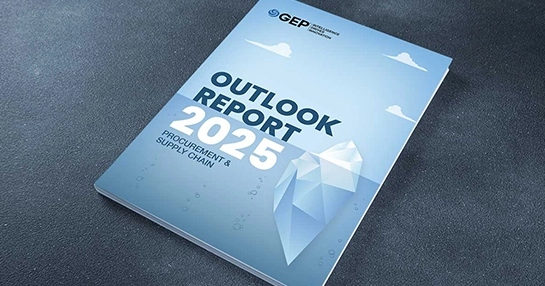
How Procurement Can Ride the Tech Tsunami
- Procurement is in the eye of a technological storm.
- Systems are fragmented, and efficiency gains have levelled.
- The future of procurement lies in convergence, a unified ecosystem.
November 19, 2025 | Procurement Software 5 minutes read
Procurement teams are overwhelmed right now. The technology landscape is shifting faster than most organizations can keep up with. AI, automation, low-code platforms — these aren't just buzzwords anymore; these are tools that procurement is expected to master and deploy. The old ways aren't working anymore. Those static workflows and manual oversight processes that worked fine five years ago now fall short. And it's not just about cutting costs or managing suppliers. Teams are being asked to drive transformation, deliver real-time intelligence, and pivot when things change.
But here's what's frustrating: even with all the push for digital transformation, most procurement teams are still working in isolation. Systems don't talk to each other. Data sits in different places. Initiatives happen disconnected from each other. Sure, plenty of teams have dabbled with automation or kicked off AI pilots. Maybe they've deployed some workflow tools. But these initiatives tend to stay small and tactical. They don't fundamentally change how procurement operates.
What’s happening is a "tech tsunami." Procurement is hit by wave after wave of new technology, and while the opportunities are real, so is the chaos. Without a coherent strategy to tie it all together, procurement ends up with a bunch of disconnected investments. Things might happen faster, but that doesn't mean they're happening in a smarter way. To put it simply, procurement is becoming more digital, but it's not necessarily more intelligent.
The answer lies in convergence. It means bringing intelligent technologies together into a single connected procurement ecosystem instead of treating each one as a separate project.
The enterprises that are getting this right aren't just layering on more tools. They're building environments where AI, automation, and orchestration work together. Agentic AI handles the thinking and reasoning. Autonomous systems take care of execution. Orchestration makes sure workflows connect properly. Low-code platforms keep everything flexible enough to adapt when needs change.
Build Intelligence at the Core With Agentic AI
Procurement needs to begin with intelligence. That's where agentic AI comes in. This isn't the basic automation procurement is used to — it's systems that can reason, learn from data, interpret what the team is trying to accomplish, and function without handholding.
Traditional automation follows a script. Agentic AI remembers. It looks at supplier data, category strategies, market trends, and then makes recommendations. Sometimes it can even initiate actions on its own. Consider it a partner and teammate, rather than an assistant, who helps you spot risks early, anticipate what's coming next, and show insights when they matter.
Here's something to consider: Gartner is forecasting that by 2028, a third of enterprise software will come with agentic AI bundled. The analyst is predicting it'll handle about 15% of routine work decisions without human input. The companies that master agentic AI at this early stage are going to push ahead past competitors.
Pair Agentic AI With Autonomous Procurement to Balance Thinking and Doing
Autonomous procurement is about execution. It takes those repetitive, rules-based tasks, such as processing purchase orders, routing approvals, and matching invoices, and handles them quickly and consistently.
But executing tasks efficiently isn't the same as making smart decisions. That's why you need both. Agentic AI figures out what needs attention. Autonomous systems execute.
For instance, when AI notices tail spend creeping up or flags a potential supplier risk, it can suggest what to do about it. Then the autonomous system kicks in — adjusting thresholds, rerouting approvals, or reaching out to suppliers automatically. One ends up with procurement that fixes problems on its own, which means the team can focus on strategy instead of putting out fires.
Discover Now - AI-Powered Procurement Software Solution
Embed Total Orchestration to Unify Workflows and Data Flows
Orchestration is what ties everything together. It makes sure every part of the process — from the initial request all the way through to payment — works as a single, connected flow.
Most procurement bottlenecks happen because things are fragmented. Systems don't work together well. Data is inconsistent. Manual handoffs create delays. Orchestration solves this by connecting sourcing, contracting, purchasing, and payments into one intelligent workflow.
When this is built into a unified source-to-pay platform, those silos disappear. Procurement gets continuous visibility into what's happening. Compliance becomes easier. Teams can collaborate effectively. It's not about making individual steps faster anymore — it's about getting the whole procurement process to flow smoothly and intelligently while staying aligned with business objectives.
Create Agility and Adaptability Through Low- / No-Code Innovation
Convergence doesn't work if systems are too inflexible to change. That's where low-code and no-code platforms become critical. They give procurement the agility to keep pace with constant change.
These tools let teams reconfigure workflows, set up new automations, or bring on new suppliers without waiting for IT to build something custom. The interfaces are visual and modular, so procurement can adapt quickly when regulations change, supply chains shift, or policies get updated. Teams stay compliant without slowing down.
There's another benefit here: it improves how procurement and IT work together. The business gets more autonomy to adapt processes when required. IT still maintains control over governance, security, and scalability. It’s a win-win situation.
Procurement Is Navigating a Tech Tsunami - and It's Upending How You Work
Learn how intelligent convergence is reshaping procurement
Elevate Strategy Through AI-Driven Category Management
When teams get convergence right, category management transforms into something powerful. AI and advanced analytics provide insights that are both real-time and forward-looking. Teams can predict risks before they hit, spot opportunities others miss, and optimize their supplier portfolio dynamically.
Category leaders can model different scenarios, weigh trade-offs, and adjust sourcing strategies as situations develop. Procurement is not locked into decisions based on last year's data. Instead, it operates with continuous intelligence that keeps procurement actions aligned with whatever the business needs.
The shift is significant. Category management stops being just about cutting costs. It becomes a way to create value across the enterprise — balancing cost considerations with risk management, sustainability goals, and innovation opportunities across the entire supply base.
All these technologies — AI, automation, orchestration, analytics, low-code platforms — are not separate trends. They're part of the same wave of change hitting procurement.
When procurement leaders recognize this and embrace convergence, they can unify their systems, streamline how things get done, and free up their teams to focus on what actually matters: making better decisions faster.
This isn't just about surviving the tech tsunami. It's about learning how to leverage it with clarity, confidence, and control.



